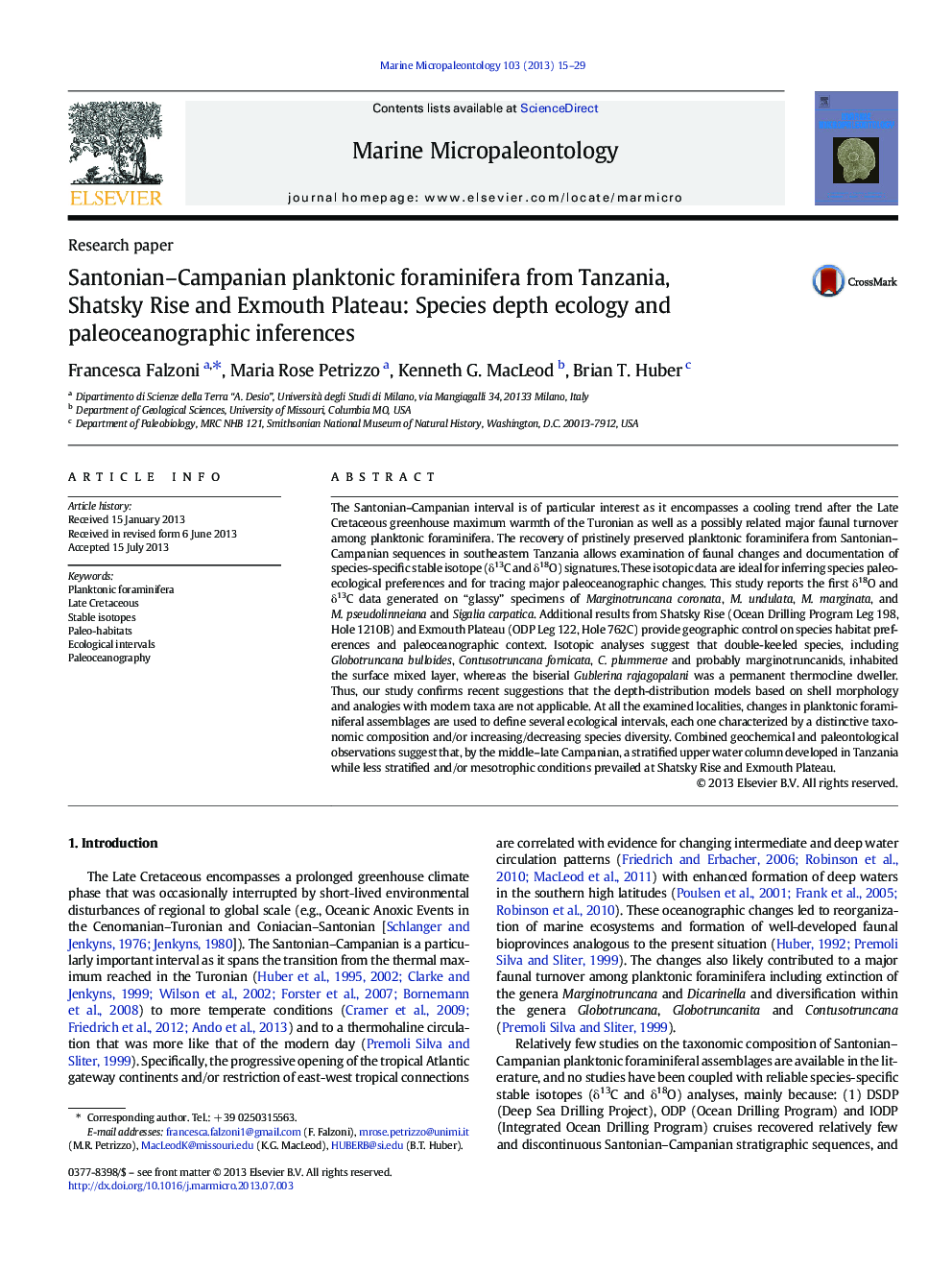| کد مقاله | کد نشریه | سال انتشار | مقاله انگلیسی | نسخه تمام متن |
|---|---|---|---|---|
| 4748861 | 1642182 | 2013 | 15 صفحه PDF | دانلود رایگان |
• Several Cretaceous keeled planktonic foraminifera were adapted to surface waters
• Depth-distribution models based on shell morphology are not applicable
• Ecological intervals are identified based on planktonic foraminiferal assemblages
• The upper-water column offshore Tanzania was well stratified
• Mesotrophy and mixing episodes prevailed at Shatsky Rise and Exmouth Plateau
The Santonian–Campanian interval is of particular interest as it encompasses a cooling trend after the Late Cretaceous greenhouse maximum warmth of the Turonian as well as a possibly related major faunal turnover among planktonic foraminifera. The recovery of pristinely preserved planktonic foraminifera from Santonian–Campanian sequences in southeastern Tanzania allows examination of faunal changes and documentation of species-specific stable isotope (δ13C and δ18O) signatures. These isotopic data are ideal for inferring species paleoecological preferences and for tracing major paleoceanographic changes. This study reports the first δ18O and δ13C data generated on “glassy” specimens of Marginotruncana coronata, M. undulata, M. marginata, and M. pseudolinneiana and Sigalia carpatica. Additional results from Shatsky Rise (Ocean Drilling Program Leg 198, Hole 1210B) and Exmouth Plateau (ODP Leg 122, Hole 762C) provide geographic control on species habitat preferences and paleoceanographic context. Isotopic analyses suggest that double-keeled species, including Globotruncana bulloides, Contusotruncana fornicata, C. plummerae and probably marginotruncanids, inhabited the surface mixed layer, whereas the biserial Gublerina rajagopalani was a permanent thermocline dweller. Thus, our study confirms recent suggestions that the depth-distribution models based on shell morphology and analogies with modern taxa are not applicable. At all the examined localities, changes in planktonic foraminiferal assemblages are used to define several ecological intervals, each one characterized by a distinctive taxonomic composition and/or increasing/decreasing species diversity. Combined geochemical and paleontological observations suggest that, by the middle–late Campanian, a stratified upper water column developed in Tanzania while less stratified and/or mesotrophic conditions prevailed at Shatsky Rise and Exmouth Plateau.
Journal: Marine Micropaleontology - Volume 103, September 2013, Pages 15–29
